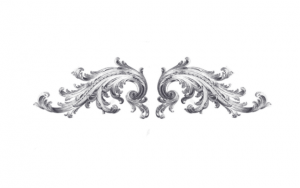Roman Relationship with Animals
The relationship between Antiquity and animals is deemed to have been very closely interwoven. An increasingly large variety of animal were assigned spiritual importance, representing figures from “polytheistic principles and religious customs.”1 Perhaps it was the effects of these ties of faith that inspired different acts of respect by Romans to animals; it is thought that wild animals were allowed entrance to villas.2 Furthermore, there was great care by animal caretakers of the Roman Republic to give comfort to kept-animals through the timely release of migratory animals from enclosures and the differing degrees of natural exposure for different species are some of many noted actions corresponding with a deep understandings of animal behavior and “culture.” These described cultures include observations of “a special ceremony of kissing before mating” in pigeons3 and the “religious ritual” of “farmyard hens…after laying an egg.”4 Perhaps this language used by Pliny is due to his personal admiration for, and therefore personification of these animals. Nevertheless, there is no doubt that the knowledge of those responsible for these kept birds, and that the pursuit and thereafter possession of these behavioral details is arguably evidence of a larger cultural interest in zoological phenomena. Furthermore, this language is not restricted to Pliny in his own description of animals, and is also evident in described interactions between animals and Romans, evidenced in literature.
 Importance of Birds to Roman Culture
Importance of Birds to Roman Culture
Natural Histories including those by Pliny the Elder were published, assigning identity to nature. Birds catalogued in Aristotle’s Historia Animalium were personified into characters of Aristophanes’ play, The Birds. Homer’s epics used the symbolism of bird species.5
It should then be noted that the persistence of “cocks, swans, ducks, and geese” in Greek works of art are thought to indicate the high popularity of these birds as pets, “almost as popular as the dog.”6 These birds were likely allowed free range of the Greek household, one Penelope remarking on how “[her]heart [was] warm[ed” by feeding the “twenty geese” that she “[had] in the house.”7 It is possible, therefore, that Roman elites were influenced by this Hellenistic admiration for birds. This influence is further evidenced by Martial’s accout of domesticated Roman birds and the corresponding fourth dimension of bird calls and perhaps bird movement in the villa:
All the crowd of untidy poultry yard wanders here and there, the shrill cackling goose, and the spangled peacocks…Proud cocks tread their Rhodian dames, and cotes are loud with the pigeons croon; on this side moans the wood pigeon on that the glossy turtle dove.8
These same species of domestic birds are kept by both the Greeks and Romans. And yet, the most obvious remains of domesticated birds are those from table scraps or sacrifices in the Forum in Pompeii.9 Evidence of the influence of birds in the Roman Villa therefore stems from existing texts, historical depictions of aviaries, and, perhaps most clearly, from depictions in garden and interior wall paintings.10
- Lazenby, Francis D. “Greek and Roman Household Pets.” The Classical Journal, 44, no.4 (Jan. 1949): 245. ↵
- Lazenby, Francis D. “Greek and Roman Household Pets.” The Classical Journal, 44, no.4 (Jan. 1949): 246. ↵
- Pliny, and Rackham, Harris. Natural History: With an English Translation/ In Ten Volumes, III,Book X: 293 – 429. Cambridge, MA: Harvard University Press, 1938: 393. ↵
- Pliny, and Rackham, Harris. Natural History: With an English Translation/ In Ten Volumes, III,Book X: 293 – 429. Cambridge, MA: Harvard University Press, 1938: 367. ↵
- Jashemski, Wilheima. “Birds: Evidence from wall paintings, mosaics, sculpture, skeletal remains, and ancient authors.” The Natural History of Pompeii, 357-400. Cambridge,UK: Cambridge University Press, 2002: 358. ↵
- Lazenby, Francis D. “Greek and Roman Household Pets.” The Classical Journal, 44, no.4 (Jan. 1949): 249. ↵
- Lazenby, Francis D. “Greek and Roman Household Pets.” The Classical Journal, 44, no.4 (Jan. 1949): 249. ↵
- Jashemski, Wilheima. “Birds: Evidence from wall paintings, mosaics, sculpture, skeletal remains, and ancient authors.” The Natural History of Pompeii, 357-400. Cambridge,UK: Cambridge University Press, 2002: 358. ↵
- Jashemski, Wilheima. “Birds: Evidence from wall paintings, mosaics, sculpture, skeletal remains, and ancient authors.” The Natural History of Pompeii, 357-400. Cambridge,UK: Cambridge University Press, 2002: 358. ↵
- Jashemski, Wilheima. “Birds: Evidence from wall paintings, mosaics, sculpture, skeletal remains, and ancient authors.” The Natural History of Pompeii, 357-400. Cambridge,UK: Cambridge University Press, 2002: 357. ↵